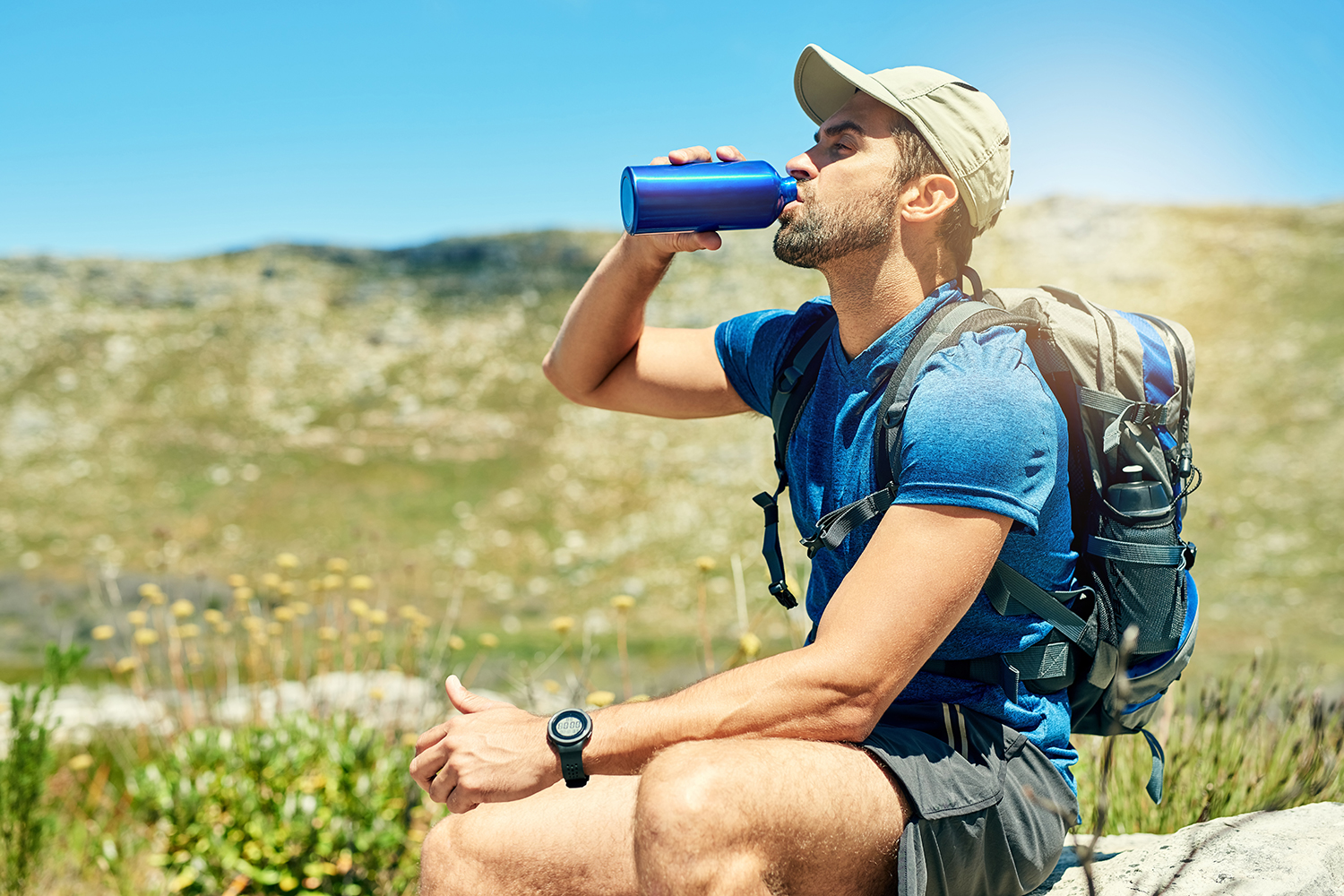Water is a tricky thing—pure, refreshing, and life-giving yet capable of hiding pesky (and sometimes dangerous) microbes. Things get even dicier when you’re drinking water in a country with different sanitation practices or sourcing from a natural body of water. One of the best tips for drinking more water is to make sure you always have a healthy source on hand.
So I’ll break down three types of water bottles so you know when it’s best to use a filter, purifier, or simply opt for the tap.
Tap water bottles: Best when you know your water source

Tap water is a convenient and affordable choice, and if the source is good, you should definitely go for it. You can expect tap water to be safe in major cities like Barcelona, Chicago, Tokyo, and surrounding suburbs unless there’s a specific issue at a water plant during your travels.
Government websites, including the US Environmental Protection Agency, make it easy to plug in a zip code and find out about the local water supply. You can also reach out to your hotel concierge or camp host to ask if the tap water is safe to drink.
Of course, if you’re feeling like indulging in a bit of DIY science, you can always bring a water Buy at Amazon along on your travels, but keep in mind they may not have as accurate results as lab tests.
I recommend going with an insulated water bottle that’s tolerant of both cold and hot drinks, especially if you’re taking your bottle on extended hikes or into extreme weather conditions. The Yeti Rambler is a great choice, and this popular brand has been a favorite of outdoors and travel enthusiasts for years.
The Yeti is dishwasher safe, 100% leakproof, and comes in a variety of colors. It offers all the conveniences you’d want in a bottle. The chug cap makes it easy to enjoy your beverage quickly without any mess and is easier to clean than a straw-based bottle.
Filtered water bottles: Best all-around travel option

I personally think that a filtered water bottle is the way to go 90% of the time. It’s best for those concerned with the taste of their water and helps create a neutral flavor by removing chlorine from water.
Let’s say you’re filling up a water bottle with a lukewarm stream of sink water from a less-than-clean gas station bathroom sink in rural Missouri. In this case, I can quickly reduce the ick factor of the tap by using my trusty filtered water bottle, avoiding funky flavors or the need to purchase bottled water.
I personally recommend the stainless steel Buy at Amazon , and I have carried it full-time on the road for the past 15 months. While the brand makes a slightly more affordable plastic bottle, I feel the metal bottle is much more durable and keeps my drinks cooler for longer.
You may have to carry filters on longer trips, but these are pretty small—about the size of a tube of chapstick—so they’re easy to carry alongside toiletries. I change my filter once every two months, but the frequency will depend on how much you use the bottle and the quality of the water itself.
The cool thing about many of the filtered water bottles, including the Brita water bottle, is that you can actually convert it to use for tap water – simply remove the filter. This can help extend the filter’s life if you’re using it in an area where the tap water is safe to drink, just make sure to store it securely in a sealable bag.
Purifying water bottles: Best for primitive and off-grid experiences

To make sure you’re completely protected when it comes to drinking water, consider investing in a purifying water bottle. It’s one of the best types of water bottles for backpackers, primitive campers, and long-term travelers.
It’s also going to be the best option if you’re traveling to a part of the world where you either don’t have much information about the water supply or know it isn’t recommended to drink from the tap. Even if you don’t use it all the time, it’s a good bet for emergency preparedness, especially if you’re staying in an area succeptible to natural disasters.
It’s also a good choice for those with weakened immune systems or those who have previously struggled with waterborne illnesses. Buy at Walmart is an excellent choice for a portable yet effective purification option. This water bottle can remove bacteria, microplastics, parasites, and viruses from your water, making it perfectly safe to drink.
You’ll have 24 ounces of sparkling drinking water in 8 seconds, much quicker than other conventional purification methods. This is great for those needing hydration fast outside in sweltering conditions. And if you want to add electrolytes to your water, you can actually do so with the bottle’s new cartridge without interfering with the filtration system.
Keep in mind, even if you’re using a purification bottle, it’s still important to know how to safely collect water for hiking to avoid getting too many contaminants in your bottle. But these are generally more reliable than other methods, like boiling water over a fire.
So, which water bottle should I choose for my next trip?

If you’re generally looking at consistent water sources and aren’t traveling to remote locations, a filtered bottle is probably your best bet. As mentioned above, many models are convertible, and removing the filter to use with tap water or flavored beverages is easy. This means they’re incredibly flexible for most types of trips.
Why not invest in all three if you regularly travel, hike, or camp? While this may seem excessive to the casual outdoor enthusiast, the seasoned explorer will appreciate the convenience and versatility of each type. And if you’re reducing the waste and cost of hundreds of water bottles a year, you’re still coming out ahead.




